It struck me that using a late point and shoot would be very like using my old Olympus XA which lived in my pocket for many years. With that camera I would slide open the cover, select an aperture, focus with the rangefinder, make my exposure and wind on. Granted, the Olympus probably had a better lens, 6-element I believe, but the difference may not have been all that significant in practice. What is different is that focussing, choice of exposure and winding on are all done for you.
Recently, I was fortunate to find this Minolta AF-E II, a very clean, lightly used example of a late 20th century auto everything, point-and-shoot made in the late 1980s. It is very similar to the Pentax Zoom 60 I have recently written about, with auto everything including a flash that fires when it considers the light is low enough. The Pentax had a fill flash and a close up option but otherwise the specifications are almost identical. The two areas where the Minolta appeals, however, are a prime lens and flexible battery choice.
It was aimed at the same buyer as all these types, i.e. someone who wanted to take photographs without having to know anything about the technical side of things, just like the first Brownie owner of 1888. The additional task of placing the AF spot is all that is asked of the photographer before pressing the release. Just about every manufacturer had one or more in their range. This model was the second version of one of Minolta’s original AF P&S ranges from the early ’80s which I understand had one model that talked to you, thankfully optional!

The Minolta AF-E II
Like many Japanese makers, their manufacturing was partly moved off shore to keep costs down in order to compete. This camera is made in Malaysia for example. Like the German camera industry, it was one of the ways used to keep control costs or just go out of business.
They all came up with a similar solution in specification terms with variation in cosmetic approach and controls.
This one is a 35mm design with a compact, plastic body, nicely shaped for a comfortable and secure hold and very well finished. Batteries can be either readily available AAA types or a little less easily found lithium version. The lithium is worth seeking out though as it supercharges the flash recycling time and gives more exposures. Finally, the pouch case is of high quality and good fit, a major factor in the camera’s current condition I am sure.
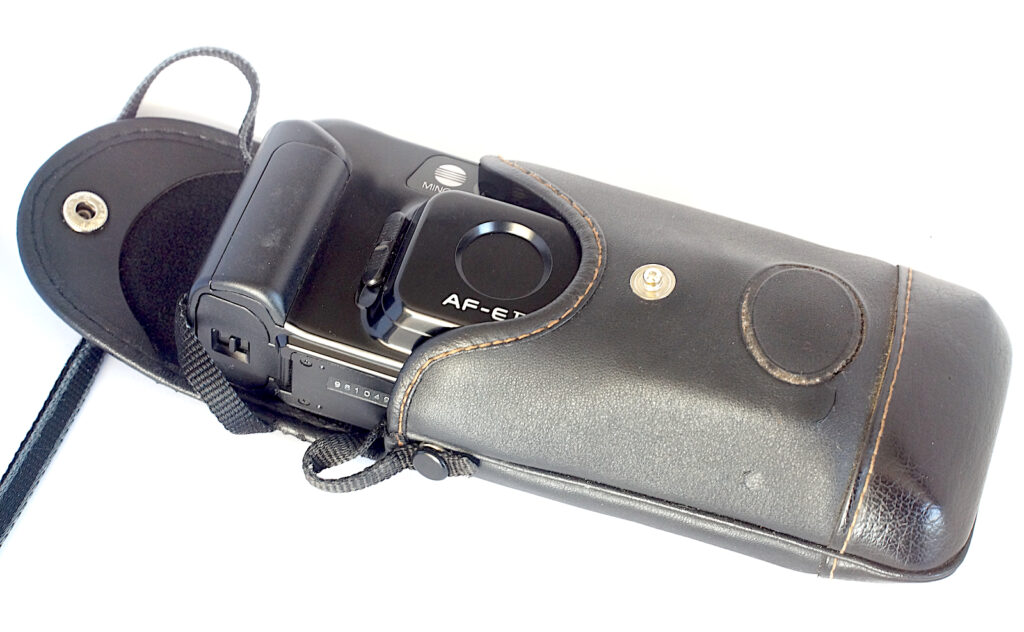
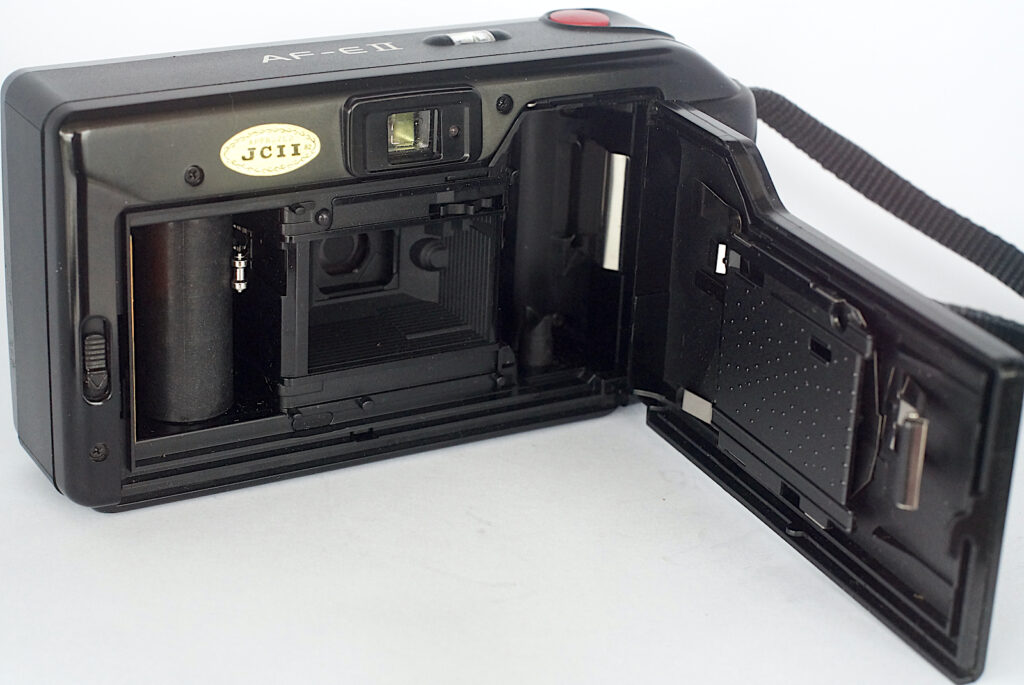
Loading the Minolta AF-E II is simple just like most of this era’s cameras. Almost drop in and close the back, drawing the film across the gate is all that is needed compared to loading 110 or 126.
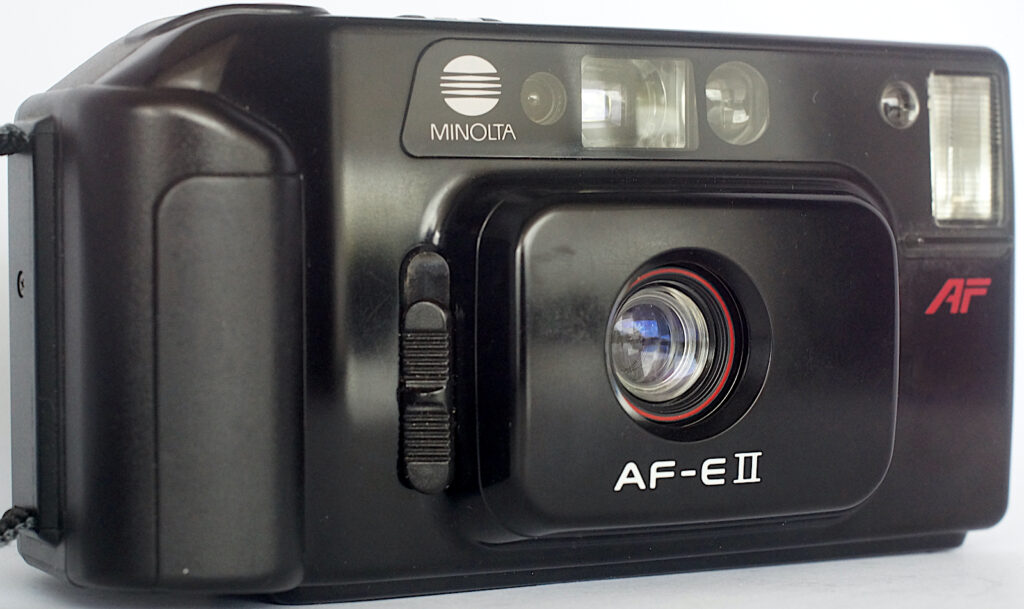
Opening the lens shutter with the slider on the side of the lens “bulge” fires it up and all that is left to do is lock focus with a half press on the release, compose and fire. Wind on is then immediate and rewind after the last frame starts automatically too.

For and against
The main plus for the Minolta AF-E II target owner is simplicity in use. It has a good make of prime lens of four elements for better image quality. Battery choice helps and overall it is a well made camera.
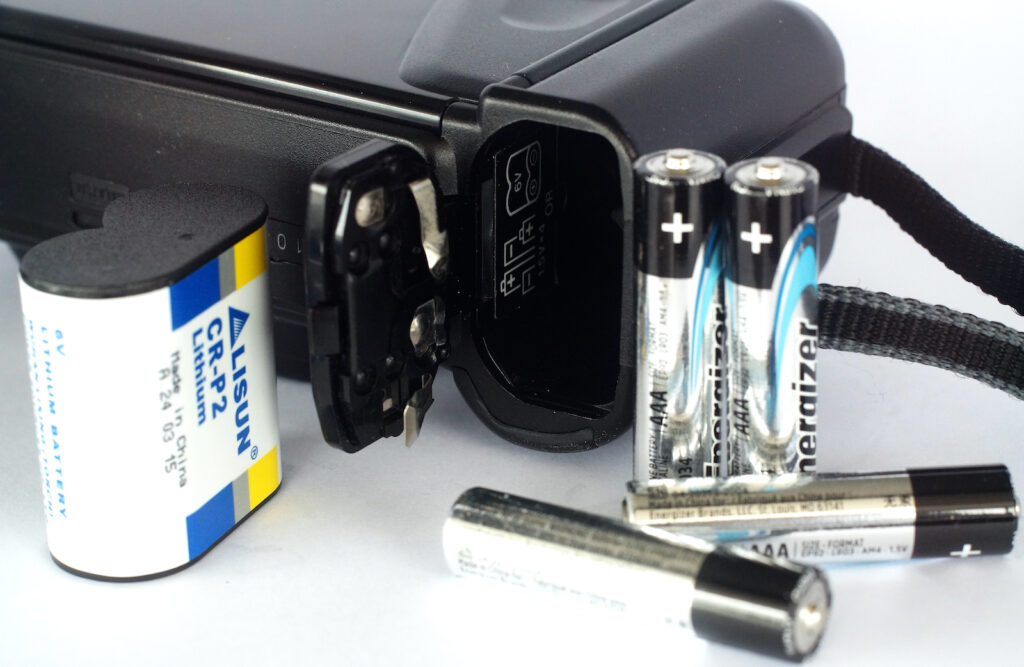
Against, again for the target owner, there are few downsides. It just does what it needs to. For a more experienced one, lack of a tripod bush is unlikely to be a drawback unlike the lack of hardly any control over settings.
In use
Running my first film through the camera impressed me. It sits nicely in the hand with the shutter release well placed and the finder quite generous. I had to manoeuvre a little to see all four edges wearing glasses but not by much. The suspended frame could be brighter or coloured, getting harder to see against a light sky.
I did get a finger into shot on several frames which is easy to do with such a compact body that doesn’t have a lens projecting.
Most noticeable was how relatively quiet it was. The shutter click is only just discernible, the wind on being the loudest sound produced. I wasted a couple of frames before I twigged what was happening, thinking it hadn’t fired. Unlike the Pentax mentioned, it rewound when the end of the film was reached, not just at frame 36 so I had a couple of extra shots on the end of the film.
The results were very encouraging, affected by my film choice more than anything. This was a roll of Kodak Pro 100 through, a film I hadn’t used previously. It has a deep base colour which made inverting some negatives near impossible so these I converted to monochrome.
In general terms the camera pretty much did what was expected of it with one or two reservations from the point of view of someone with a little experience who is used to more control.
Exposures were generally good but there were several frames where I would have chosen a different aperture for example. I don’t know what the programme is here but if it favours shutter speed as many do then it will set the highest speed it can to avoid shake even if a smaller aperture would suit the subject better. The similar Pentax Z60 I looked at recently probably has the same set up but with the option to set fill flash which could help and give better definition and depth of field in lower light levels.
The flash fires automatically, and fired on only two frames, one when I expected it to fire and it didn’t while it did fire on another frame which didn’t need it. To be fair, both these subjects were nothing like the social records it is designed to cover when I would imagine it would do a good job.

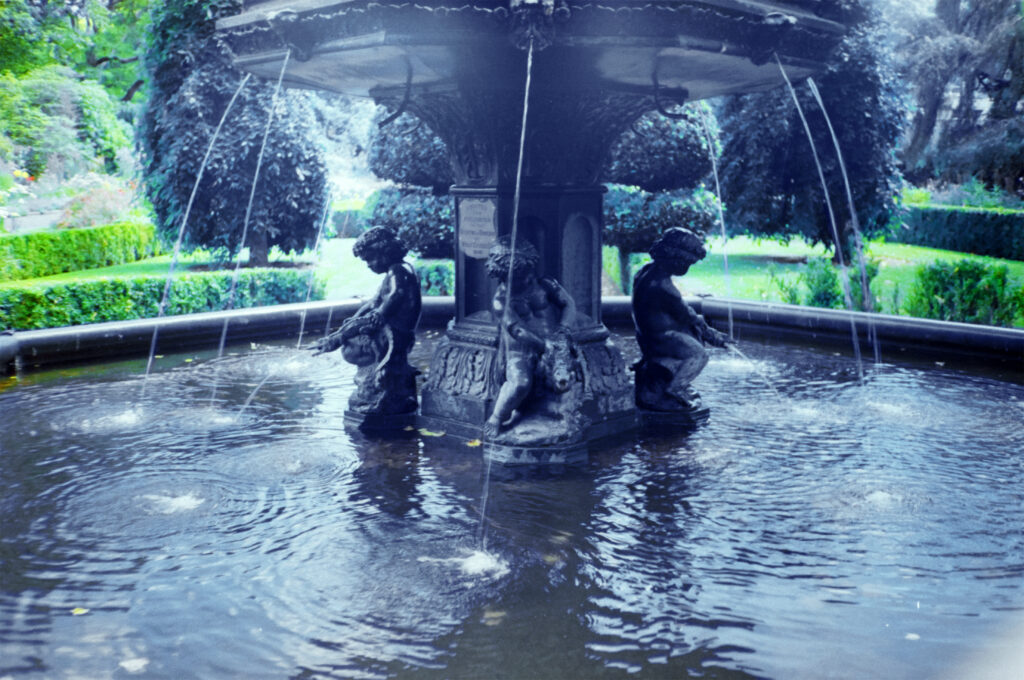
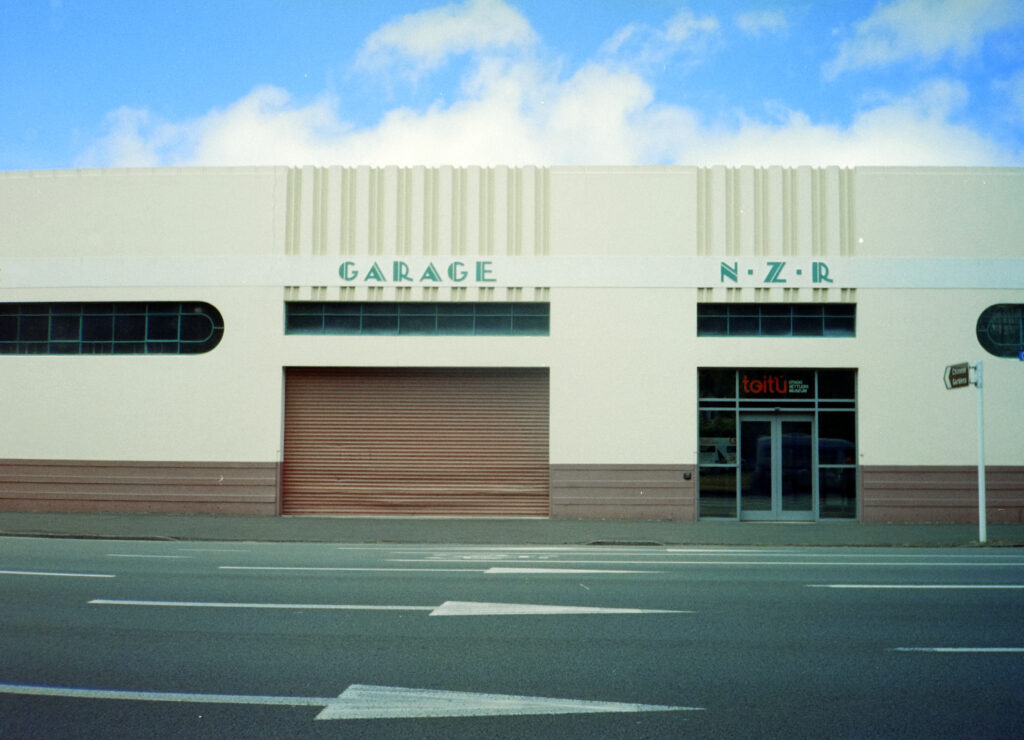

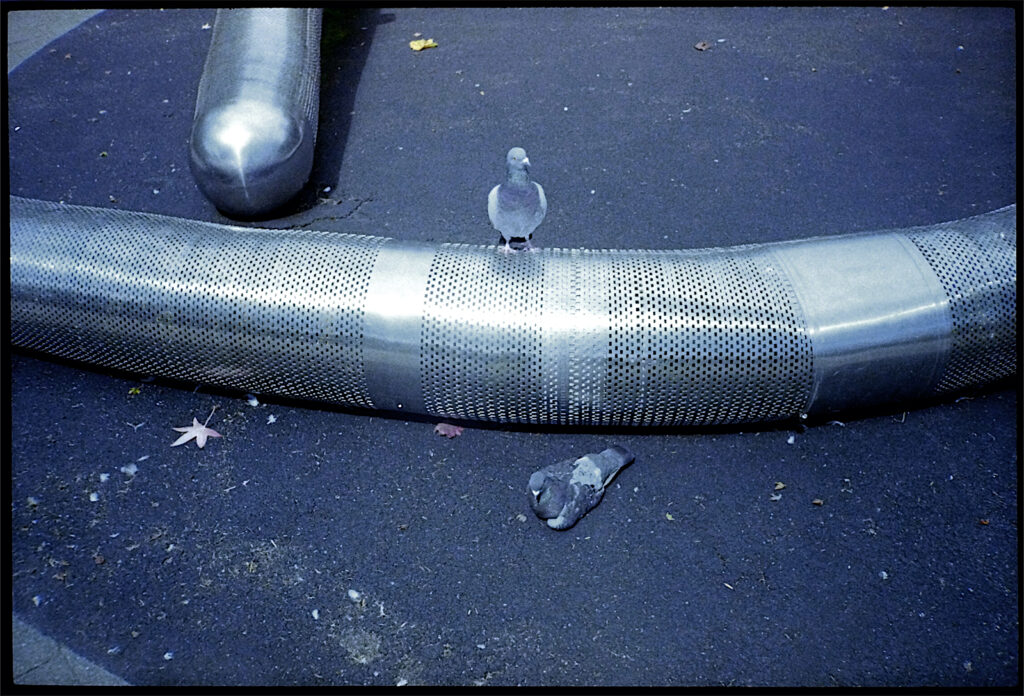
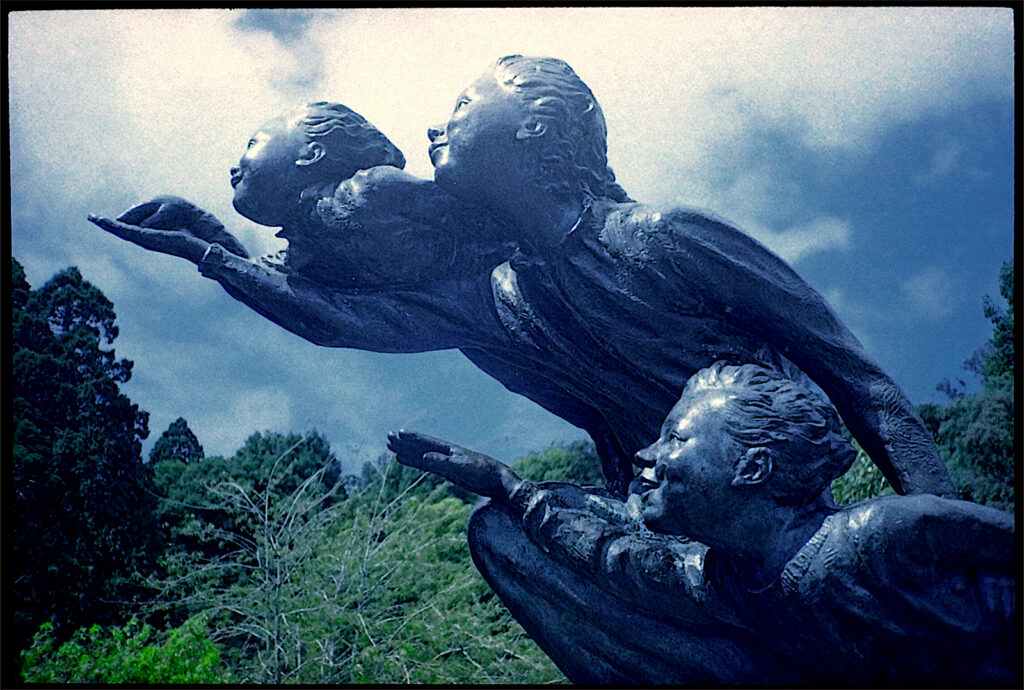


Making new friends.
Conclusion
Operating the Minolta AF-E II is almost as simple as it can get. Winding, rewinding, exposure and focus are all taken care of automatically once the simple loading procedure is completed. And most results will not disappoint with excellent performance from its 4-element lens.
Judging this camera against its target buyers I would say it does a good job but there are built in features that have the potential to disappoint, even for them. Choice between aperture or shutter priorities would be a really useful feature as provided on more advanced models and would potentially produce better results but no doubt fewer sales.
Unlike the Pentax Z60, however, I could live with it in the way I did with the XA and have it as a convenient camera to use when I don’t want the bulk of more comprehensively specified models. My mobile phone lives in my pocket these days but this will give me more pleasure using it.
Share this post:



 Viesearch - The Human-curated Search Engine
Blogarama - Blog Directory
Web Directory gma
Directory Master
http://tech.ellysdirectory.com
8e3055d3-6131-49a1-9717-82ccecc4bb7a
Viesearch - The Human-curated Search Engine
Blogarama - Blog Directory
Web Directory gma
Directory Master
http://tech.ellysdirectory.com
8e3055d3-6131-49a1-9717-82ccecc4bb7a